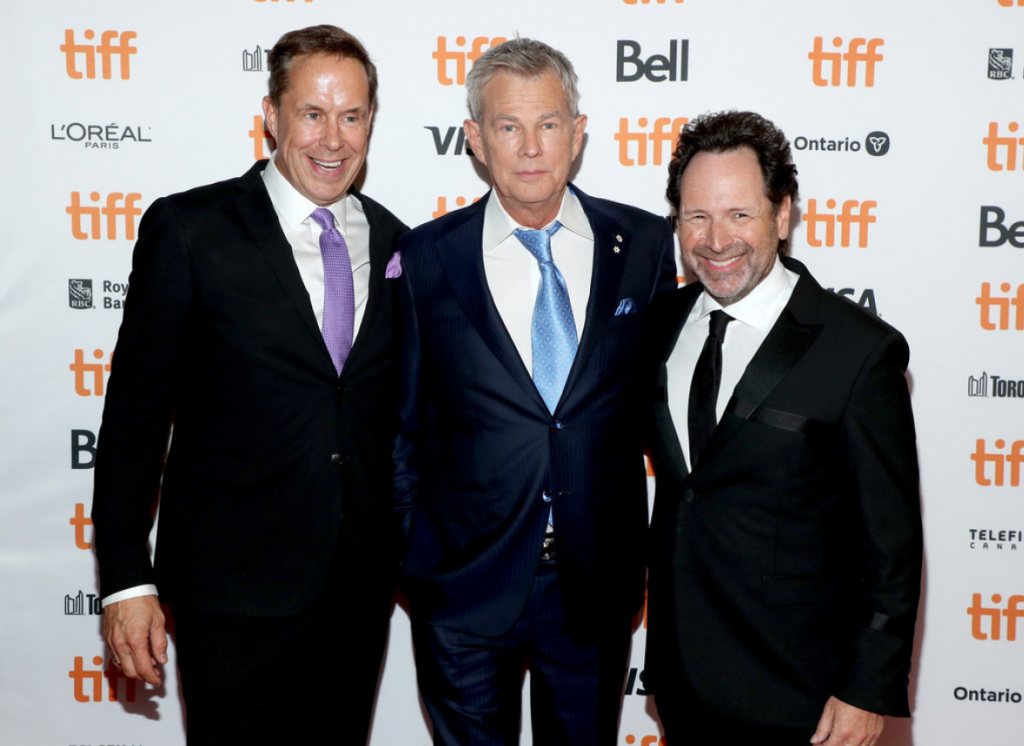Documentary film has never been more important in the media diet of Americans. Documentary production has grown dramatically in the last three decades as production fueled by Discovery, National Geographic, Amazon, Netflix, Hulu and niche content providers shows us. Market data from Nash Information Services (2021) demonstrates documentary’s rapid growth at the box office in recent years. The number of annual documentary theatrical releases has more than tripled since 2000. Nonfiction programming on TV has experienced a similar upward trend. Likewise, nonfiction programming is an increasingly important content category on streaming platforms. Netflix’s Tiger King (2020) was one of the most watched SVOD original series of 2020, outpacing The Mandalorian (2020) on Disney+ (Nielsen, 2020). The documentary genre, up 120% from 2019 to 2020, was the fastest-growing genre on streaming in 2020 (Fischer, 2021).

Netflix falsely categorized Operation Varsity Blues, a scripted and acted docudrama, as a documentary.
Mainstream documentary has both vastly diversified in the last two decades, and also become indeterminate at the edges. Documentary is a form distinguished specifically by its claim to tell a meaning- making story in good faith, about something that really happened. The line between that claim and fiction has become less clear in some cases. While documentary has long used re-enactment, for instance, it has become far more common to incorporate both scenes re-enacting an episode (for instance, in Coup 53 [2019] and Client 9 [2010]) and actors simulating a real-life role (Operation Varsity Blues [2021]). Entire films have been composed using fictional aesthetics—for instance, Silenced (2014), using a black-and-white film noir approach for extended re-enactment segments, and 1971 (2014), using a sepia tone and blurring imagery to hint that re-enactment is actually recovered videotape footage (Hornaday, 2021). While some filmmakers, including the above-referenced films, make their choices explicit within the film, others simply elide fiction with documentary. For instance, Mighty Times: The Children’s March (2004) famously faked actuality footage from a 1963 civil rights march. The use of reenactment entered new territory when artificial intelligence was used to mimic the voice of Anthony Bourdain in Roadrunner (2021), without revealing the manipulation.
Meanwhile, fast-paced entertainment production has seized both on the lower-cost production realities of documentary and the growing popularity of the form, to exploit the form’s claims to truth for sensationalism. As documentary channel ratings increased in the early 2000s, History Channel began to fill up with UFO stories, Court TV expanded its crime coverage, Discovery and National Geographic channels both packed every moment of their top-rated series with suspense. They borrowed from the look of documentary cinéma vérité and its claims to unfiltered reality, exploiting it for sensationalism (Ouellette, 2020). Reality television, a hybrid of documentary, fiction and game shows, surpassed sitcoms, dramas, and sports in popularity for the first time in the 2002-2003 television season, according to audience data published by Nielsen (2011), and has continued to capture large audiences in recent years. Streamers have fomented binge watching by encouraging production of documentary mini-series (Morfoot, 2021). True crime is a top-rated genre in streamed mini-series, which typically recapitulate and even glorify the legitimacy of policing and criminal justice systems that reinforce injustice and inequality (Rangan & Story, 2021).
As documentary has grown, production practices have evolved to keep pace, and in some troubling ways. By the 1990s, cable TV had developed factory-like production systems both in-house and in production companies that served them, matching their branded looks and styles. These made-for-hire works fed into what became known variously as the non-fiction, factual and unscripted market. As reality television became its own category, documentary filmmakers often got their first work, and learned production practices, on reality shows. Filmmakers reported being told what to tell people in their films to say; productions skimped on or skipped fact- checking; field producers never met editors, who themselves were being told to cut to brand messaging and expectation. Fiction and fact blur. All the while, audiences have remained largely in the dark with respect to these practices and have tended to accept these stories at face value.

David Foster (center) exercised some creative control over the production of Off the Record, a doc about his life and career.
In service to the market, commercial productions borrow the mantle of authenticity from public trust in the documentary form to give works more audience appeal. “Documentaries help form the architecture of the studios’ brand, signaling that they care about the climate justice, Me Too, and Black Lives Matter movements as well as projecting an image of the organization as transparent, authentic, and truthful,” notes a leading documentary scholar (Glick 2021). And so even programs that are not documentary are reclassified to attract the gloss. Operation Varsity Blues (2021), a fiction docudrama starring Matthew Modine, is classified on Netflix’s site as a documentary. Netflix’s Tiger King (2020) had many reality-TV aspects, but it was also marketed as a documentary. True- crime series can use the trappings of investigation, while selecting the evidence to oversimplify and crusade. For instance, the Netflix series Making a Murderer slighted evidence against its central characters, leading some to characterize it as “highbrow vigilante justice” (Schulz, 2016). But it became wildly popular, and it led to a national petition demanding exoneration.
With the exception of public TV, sponsorship has become a largely unguarded area full of conflict-of-interest possibilities. Maria Schwarzenegger’s child’s addiction problems with Adderall led her to provide her foundation’s funds for a Netflix documentary, Take Your Pills (2018); the foundation’s influence is unknown. Verizon fully funded a film by Rory Kennedy, Without a Net (2017), on issues affecting the FCC’s e-rate policy; the film does not disclose Verizon’s interest in e-rate or conflicting views about how that fund is managed. Bill and Melinda Gates’ foundation provides funding that results in substantial media production, where funder influence goes unexamined. Paying people for their interviews—even giving them their talking points—as seems to have happened in Tiger King (2020)—goes unscrutinized. Mike Rowe’s Six Degrees on Discovery+ is openly funded by fossil fuel corporate interests, reflected in his constant plugs for fossil fuel. (Aufderheide, Chandra & Jaszi, 2009; Aufderheide, 2019; Ruwer, 2020; Schwab, 2019; Schwab 2020; Noor, 2021)
With the advent of instant global distribution by streamers, geopolitical questions have become even more relevant to commerce. Streaming companies might avoid films on important issues—such as the murder of journalist Jamal Khashoggi, or the death of Kim Jong-un’s brother—that could complicate their global businesses (Sperling, 2020). Netflix has taken down content at the request of foreign governments eight times in recent years. Despite the fact that documentaries are its fastest-growing category, Netflix’s president Reed Hastings blandly asserts that censorship is not a concern for the company, because it’s merely providing entertainment. (Molla & Kafka, 2020a; Molla & Kafka 2020b)
In this environment, independent documentary filmmaking of the kind showcased on public TV, on CNN Docs, ESPN’s 30X30, and HBO Documentaries has distinguished itself both for (often passionate) authorial voice and integrity, including basic claims to accuracy, authenticity, and transparency about perspective. As that market has heated up, however, and with the addition of streamers such as Amazon, Netflix and Hulu, these documentaries have also become hot commodities for their ability to win critical attention and awards. At Sundance 2021, streamers easily outpriced other purchasers in acquiring documentaries, to the point of raising questions about further concentration in the distribution arena (Kaufman, 2021). Documentaries’ legitimacy and credibility accrues as well to the organizations that distribute them.
At the same time, transparency about standards and practices resides exclusively in public broadcasting, where PBS’s standards and Frontline’s journalistic guidelines are used.

 Patricia Aufderheide is University Professor in the School of Communication at American University She is the author of, among other books, Documentary Film: A Very Short Introduction (Oxford University Press), and co-author with Peter Jaszi of Reclaiming Fair Use: How to Put Balance Back in Copyright (University of Chicago Press). She has served on the board of Kartemquin Films, and is a board member of the Independent Television Service.
Patricia Aufderheide is University Professor in the School of Communication at American University She is the author of, among other books, Documentary Film: A Very Short Introduction (Oxford University Press), and co-author with Peter Jaszi of Reclaiming Fair Use: How to Put Balance Back in Copyright (University of Chicago Press). She has served on the board of Kartemquin Films, and is a board member of the Independent Television Service. Marissa Woods is a filmmaker and arts researcher. She is completing a Master of Fine Arts in Film & Media Arts at American University’s School of Communication.
Marissa Woods is a filmmaker and arts researcher. She is completing a Master of Fine Arts in Film & Media Arts at American University’s School of Communication.
